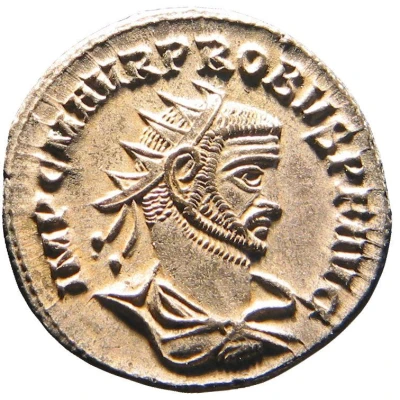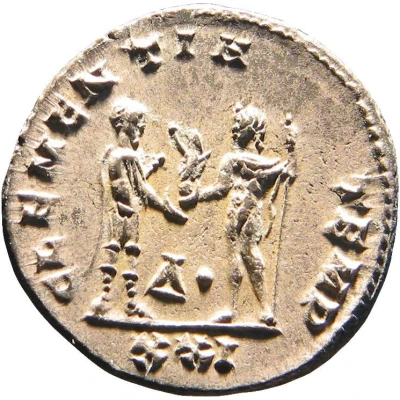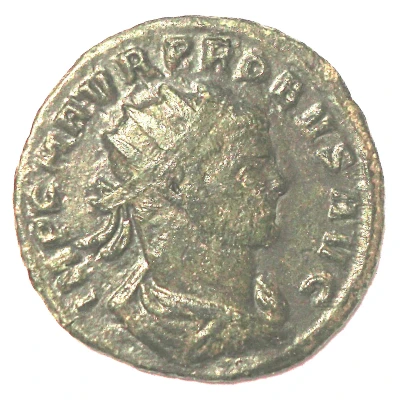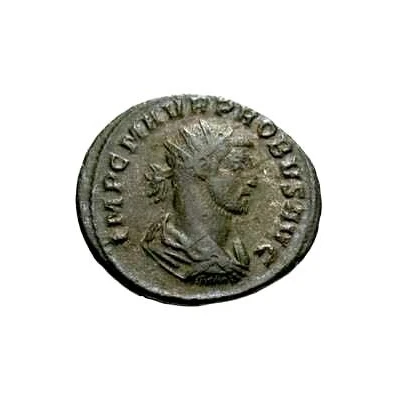
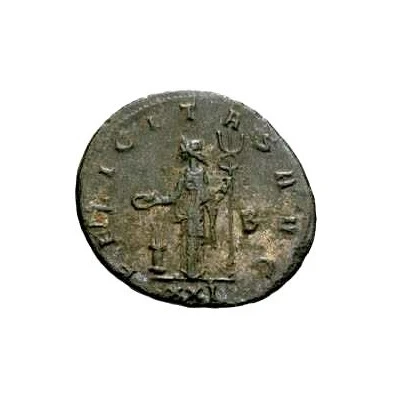

© MGakowski
Antoninianus - Probus FELICITAS AVG; Siscia
| Silver | 3.8 g | 23 mm |
| Issuer | Rome › Roman Empire (27 BC - 395 AD) |
|---|---|
| Emperor | Probus (Marcus Aurelius Probus) (276-282) |
| Type | Standard circulation coin |
| Years | 276-282 |
| Value | Antoninianus (1) |
| Currency | Antoninianus, Reform of Caracalla (AD 215 – 301) |
| Composition | Silver |
| Weight | 3.8 g |
| Diameter | 23 mm |
| Shape | Round (irregular) |
| Technique | Hammered |
| Orientation | Variable alignment ↺ |
| Demonetized | Yes |
| Updated | 2024-10-05 |
| Numista | N#74810 |
|---|---|
| Rarity index | 90% |
Reverse
Felicitus standing left, holding patera over altar, and along caduceus.
Script: Latin
Lettering:
FELICITAS AVG
B
XXI
Edge
Plain
Comment
Probus, " a man of probity indeed," as a contemporary historian put it, ascended the throne at the age of 44 after the murder of Florianus. He enjoyed a good reputation as military commander and his skill served him in good stead, for he spent his entire reign fighting foreign invaders and suppressing imperial pretenders. The first two years were occupied with defending the empire against Franks, Vandals, and Burgundians, a task Probus accomplished successfully for the time being. In 279 Probus marched to the Balkans, where he strengthened the Danubian frontier by defeating the Getae. He then crossed over to Asia Minor to deal with the marauding bands of Lydius the Isaurian. Immediately after the defeat of Lydius Probus had to hurry up to Egypt to suppress a local rebellion, and in between must have had an encounter with the Persians, for he added "Persicus Magnus" to his title. Hardly being able to take a breathing after all that grueling labor, Probus in 280 faced a series of continuous rebellions on the empire's European frontiers, and then in Syria. The rebellions flared down however, and toward the end of 281 Probus felt entitled to a lavish triumph in Rome. A man of action, the following spring Probus set off once again for the East with a Persian campaign in mind. His departure seduced Carrus, the Praetorian Prefect, into launching his bid for the throne. The legions on the Upper Danube supported him and so did the expeditionary force Probus sent out to deal with him. Once this defection became known in Probus's camp, the rest of his troops decided to follow suit. Probus took refuge in a look-out tower near Sirmium, but was captured, put to death, and quickly buried under a large mounded tomb.Interesting fact
The Antoninianus coin, which was issued during the reign of Emperor Probus (276-282 AD), was the first Roman coin to feature a portrait of the emperor wearing a beard. This was a departure from the traditional clean-shaven image of Roman emperors and signified a shift towards a more militaristic and rugged image. The coin's design also included the goddess Felicitas, who was associated with good luck and prosperity, highlighting the emperor's efforts to promote peace and prosperity throughout the empire.
